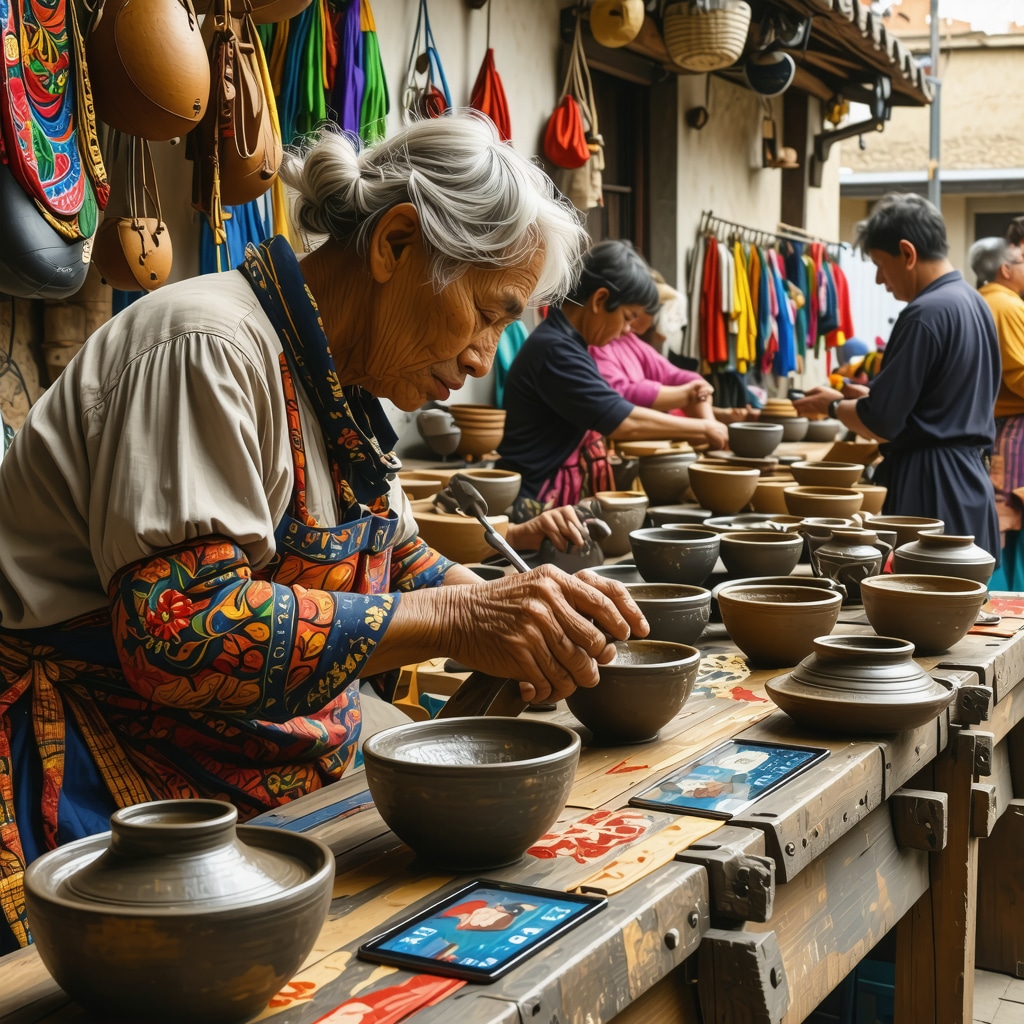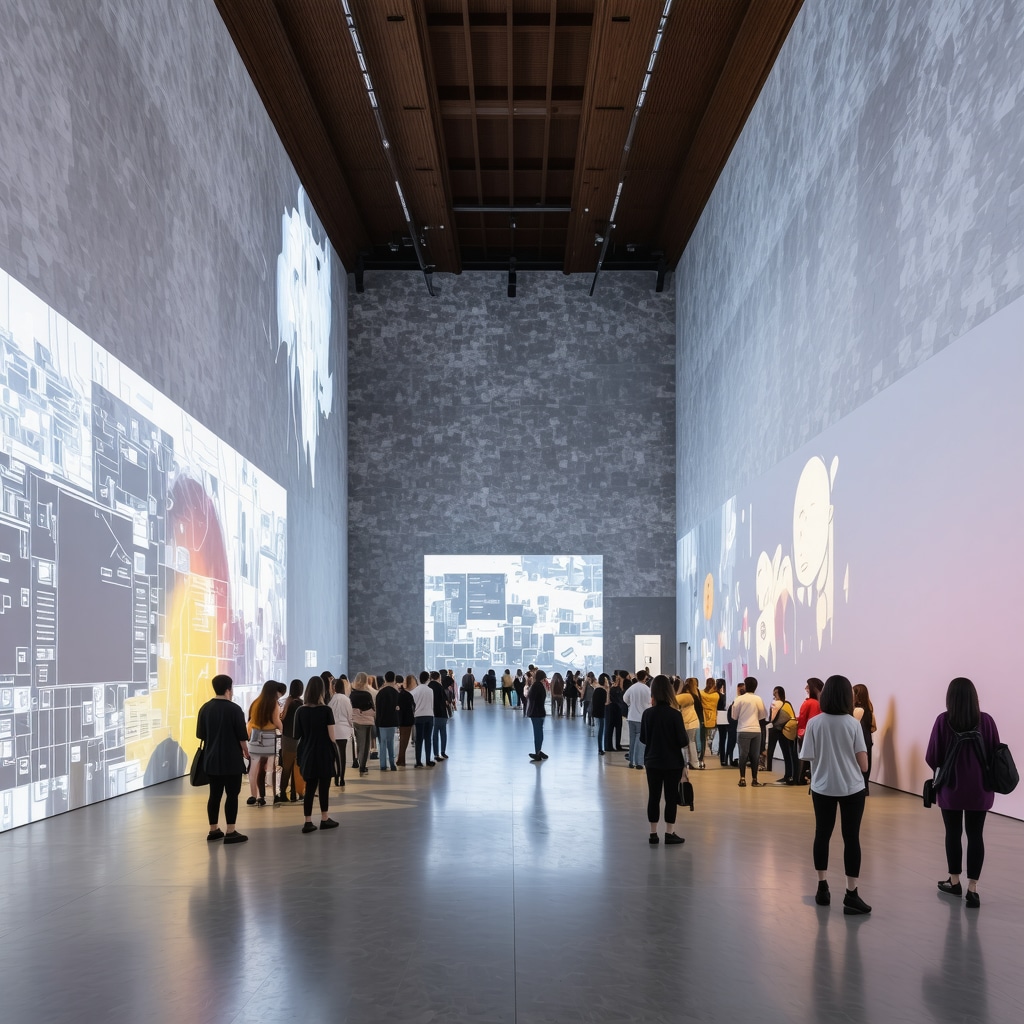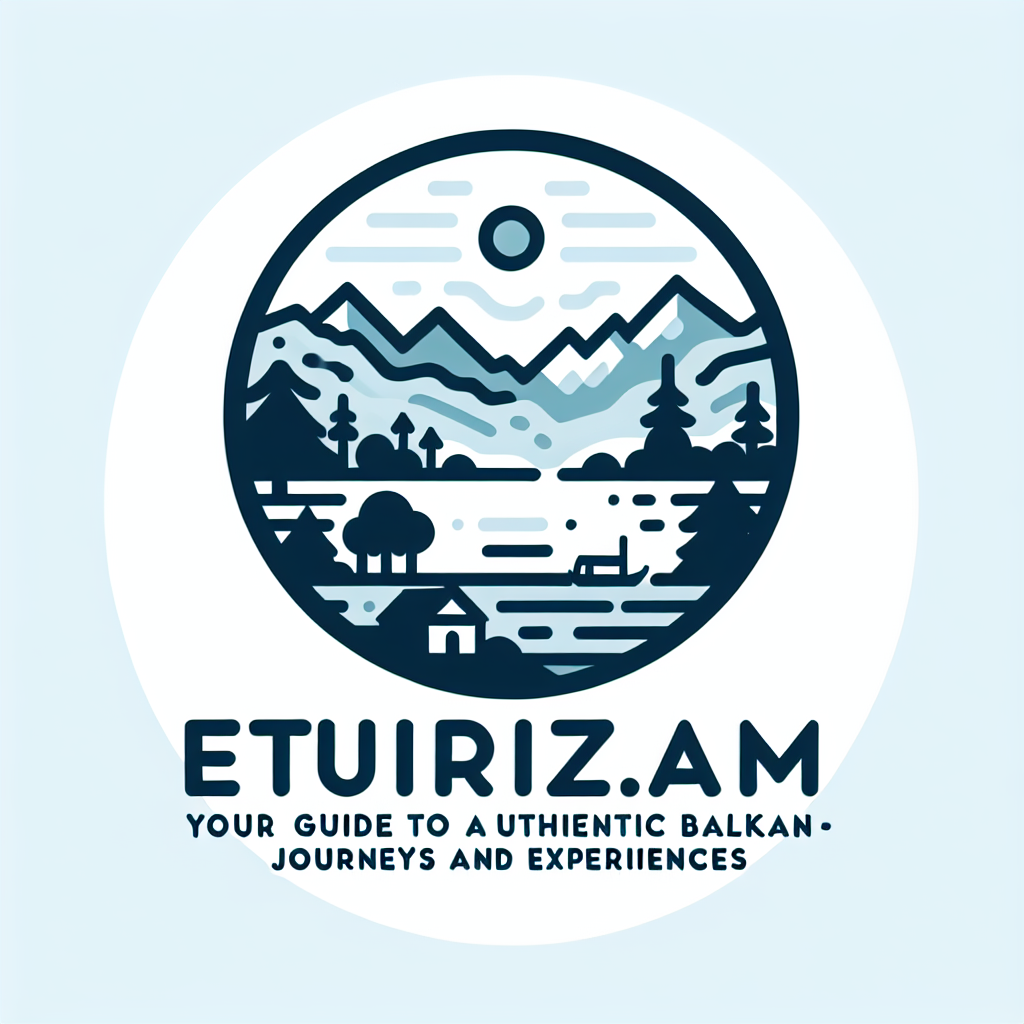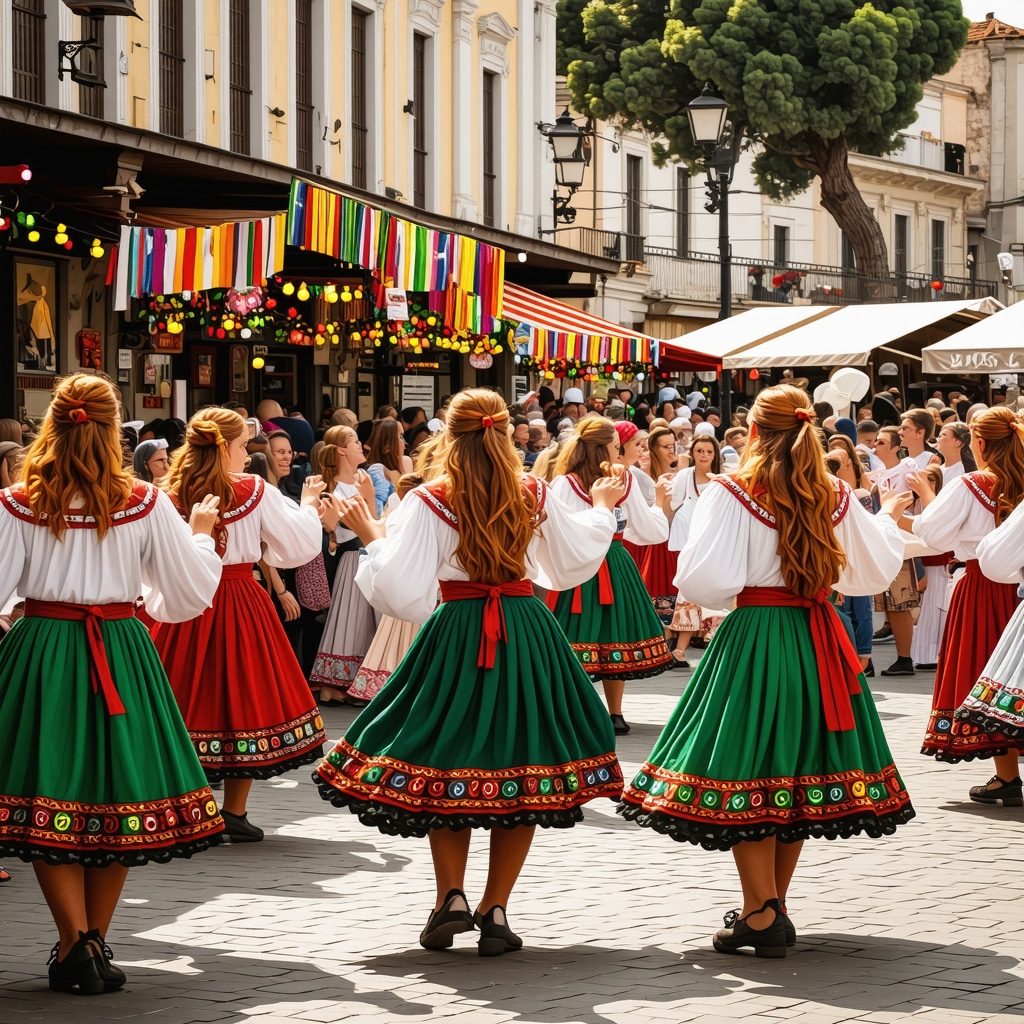Një udhëtim nëpër traditat e pasura të Banja Lukës
Banja Luka, qyteti i dytë më i madh i Bosnjë-Hercegovinës, është një thesar kulturor dhe historik që fton udhëtarët të eksplorojnë traditat dhe festat që mbajnë gjallë shpirtin e komunitetit të saj. Ky qytet nuk është vetëm destinacion për adhuruesit e natyrës dhe aventurës, por edhe për ata që kërkojnë një përvojë autentike kulturore, ku traditat lokale dhe festat e veçanta luajnë një rol kryesor në identitetin e tij unik.
Festat që ngjallin emocion dhe bashkim shoqëror
Në Banja Luka, festa janë më shumë se thjesht ngjarje; ato janë një reflektim i historisë dhe traditave të komuniteteve që jetojnë aty. Një nga festat më të njohura është Festival i Karnavaleve, ku rrugët e qytetit mbushen me ngjyra, kostume tradicionale dhe muzikë që bashkon njerëzit në një atmosferë gëzimi dhe kreativiteti. Kjo festë është një mundësi e shkëlqyer për të përjetuar kulturën lokale në një mënyrë të gjallë dhe interaktive.
Po ashtu, Festa e Verës në Banja Luka është një tjetër ngjarje që duhet të provohet. Me koncerte në hapësira të hapura, aktivitete kulturore dhe ushqime tradicionale, kjo festë sjell komunitetin së bashku për të festuar sezonin dhe trashëgiminë lokale. Kjo është koha ideale për të shijuar muzikën popullore dhe për të provuar produktet e zonës, duke u zhytur në atmosferën e ngrohtë dhe mikpritëse të qytetit.
Si ndikojnë traditat në jetën e përditshme të banorëve të Banja Lukës?
Traditat në Banja Luka nuk janë vetëm momente festive; ato janë pjesë integrale e jetës së përditshme dhe identitetit lokal. Për shembull, ritualet e festave fetare dhe familjare janë të mbushura me simbolizëm dhe nxisin ndjenjën e përkatësisë dhe bashkësisë. Banorët ruajnë këto zakone gjeneratë pas gjenerate, duke transmetuar vlera të rëndësishme si respekti, mikpritja dhe solidariteti.
Kjo lidhje e fortë me traditat shfaqet edhe në artizanatin lokal, ku punimet me dorë, veshjet tradicionale dhe muzikë e vallëzime karakteristike pasqyrojnë historinë dhe shpirtin e rajonit. Për më shumë rreth turizmit dhe traditave në Bosnjë dhe rajonet përreth, mund të eksploroni udhëzuesin e specializuar për traditat dhe turizmin në Ballkan.
Një ftesë për të përjetuar magjinë e festave lokale
Nëse dëshironi të ndjeni magjinë e vërtetë të Banja Lukës, pjesëmarrja në festat lokale është një mënyrë e shkëlqyer për ta bërë këtë. Ata që vizitojnë qytetin në kohë festash do të kenë mundësinë të bashkohen me banorët në aktivitete që shkojnë përtej turizmit të zakonshëm, duke krijuar kujtime të paharrueshme dhe lidhje të thella me kulturën vendase.
Për më tepër, eksploroni më shumë destinacione kulturore dhe natyrore në rajon si Banja Luka si destinacion për kulturë dhe aventurë dhe shumë vende të tjera të pasura në trashëgimi dhe bukuri natyrore.
Burimi ekspert për traditat dhe festat në Banja Luka
Studimet antropologjike dhe raportet kulturore, si ato të publikuara nga Bosnia Heritage Foundation, vënë në pah rëndësinë e ruajtjes së këtyre traditave për identitetin dhe zhvillimin social të komunitetit. Këto burime ofrojnë një kuptim të thellë të mënyrës sesi festat dhe ritualet ndikojnë në strukturën shoqërore dhe në ruajtjen e trashëgimisë kulturore në Banja Luka dhe më gjerë.
Ju ftojmë të ndani në komentet tuaja përvojat tuaja me traditat dhe festat e Banja Lukës, ose të ndani këtë artikull me miqtë që duan të zbulojnë thesaret kulturore të rajonit!
Beyond the Celebrations: Living Traditions in Daily Banja Luka
While festivals like the Festival of Carnivals and the Summer Festival illuminate Banja Luka with vibrant energy, it is the daily customs and rituals that truly weave the fabric of the city’s cultural identity. Residents engage in everyday practices that nurture community bonds and sustain intangible heritage, from traditional crafts to culinary rituals.
Artisans in Banja Luka preserve centuries-old techniques in pottery, weaving, and wood carving, often passing their skills from generation to generation. These crafts are not only economic activities but also forms of cultural expression that embody local history and aesthetics. Visitors can find authentic handcrafted souvenirs that tell stories of the region’s past and present.
Gastronomy as a Window into Banja Luka’s Cultural Soul
Food traditions in Banja Luka offer an immersive way to experience its culture. The city’s cuisine reflects a harmonious blend of Balkan and Mediterranean influences, featuring dishes like ćevapi, begova čorba (Bosnian soup), and baklava. Markets and local eateries provide a lively setting to engage with the community, savor authentic flavors, and learn about culinary customs that have been preserved despite modern influences.
Sharing meals during festivals or family gatherings reinforces social ties and transmits values of hospitality and respect. For those interested in exploring further, detailed guides on Balkan gastronomy and cultural experiences can be found in resources such as the tourism and traditions guide across Slovenia, Serbia, and Bosnia.
How Does Banja Luka Balance Modernity with Tradition?
What strategies does Banja Luka employ to integrate its rich traditions into contemporary life and urban development?
Banja Luka faces the challenge of modern urbanization while striving to preserve its unique cultural heritage. The city has adopted several strategies to maintain this balance, including the promotion of heritage tourism, support for traditional arts, and incorporation of cultural narratives into city planning and public spaces. Educational programs in schools emphasize local history and traditions, nurturing a sense of pride and continuity among the youth.
Moreover, cultural festivals have evolved to include modern artistic expressions alongside traditional performances, fostering a dynamic cultural scene that attracts both locals and tourists. According to a study published by the UNESCO Culture Sector, such integrative approaches are vital for sustainable cultural development, enabling communities like Banja Luka to thrive while honoring their heritage.
Discover More About the Cultural Richness of the Balkans
For travelers and culture enthusiasts eager to deepen their understanding of the Balkans, exploring neighboring destinations enriches the experience. Regions such as North Macedonia and Croatia offer stunning natural landscapes and historical landmarks that complement the cultural journey in Banja Luka. You can explore these wonders further in the guide to North Macedonia and Croatia’s natural and historical marvels.
We invite you to share your thoughts or personal stories about Banja Luka’s traditions in the comments below, and consider sharing this article with fellow travelers who appreciate the rich cultural tapestries of the Balkans.
Preserving Heritage Through Innovative Cultural Initiatives in Banja Luka
Banja Luka is at the forefront of blending deep-rooted traditions with progressive cultural strategies that ensure the vitality and relevance of its heritage in the 21st century. Beyond maintaining festivals and artisanal crafts, the city invests in interactive heritage projects that engage both residents and visitors in immersive experiences. These initiatives often utilize digital technologies such as virtual reality and augmented reality to recreate historical environments and traditional ceremonies, allowing a broader audience to connect with the city’s cultural narrative in unprecedented ways.
For instance, the local cultural center recently launched a VR exhibit that reconstructs the traditional kolo dance performances, enabling users to participate virtually in these communal celebrations. This fusion of technology and tradition not only preserves intangible cultural elements but also attracts younger generations, fostering a deeper appreciation and continuity.
Expert Insights: How Does Banja Luka Navigate Cultural Heritage in Urban Planning?
What role does urban design play in safeguarding Banja Luka’s cultural identity amid modernization?
Urban planning in Banja Luka strategically incorporates cultural landmarks and traditional aesthetics to create a harmonious dialogue between old and new. The city’s master plan emphasizes the protection of architectural heritage sites while promoting adaptive reuse of historical buildings as cultural hubs, galleries, and artisanal workshops. This approach reflects a broader understanding that urban space is not merely functional but also a canvas for cultural expression and memory.
According to a comprehensive report by the UNESCO World Heritage Centre, integrating cultural heritage into spatial planning is a critical factor for sustainable urban development. Banja Luka’s efforts exemplify this paradigm by marrying economic development with cultural preservation, fostering social cohesion and enhancing the city’s unique character.
Revitalizing Traditional Crafts: Challenges and Opportunities in Contemporary Markets
While traditional crafts in Banja Luka continue to symbolize cultural identity, artisans face challenges posed by globalization and shifting consumer preferences. To address this, local cooperatives and cultural NGOs have initiated programs that blend traditional techniques with contemporary design, creating products that appeal to modern markets without compromising authenticity. These initiatives often include workshops, exhibitions, and collaborations with international designers to expand reach and economic viability.
Moreover, the development of heritage tourism packages that highlight artisanal experiences encourages sustainable cultural consumption, providing artisans with direct market access and visitors with meaningful engagement. This model aligns with findings from the International Centre for the Study of the Preservation and Restoration of Cultural Property (ICCROM), which advocates for community-centered preservation approaches that empower local stakeholders.
Interactive Engagement: Technology as a Catalyst for Cultural Transmission
Innovative digital platforms serve as vital tools for documenting and disseminating Banja Luka’s rich traditions. Online archives, interactive storytelling apps, and social media campaigns enable the city’s cultural heritage to reach global audiences while encouraging local participation. Educational institutions leverage these resources to integrate cultural heritage into curricula, enhancing intergenerational knowledge transfer.
Such digital engagement not only preserves traditions but invigorates them by inviting reinterpretation and creative expression, ensuring they remain living, evolving components of Banja Luka’s cultural landscape.

Deeper Exploration: Where Can Enthusiasts Engage With Banja Luka’s Cultural Heritage?
For those inspired to delve deeper into Banja Luka’s cultural fabric, numerous opportunities exist beyond festivals and galleries. Joining community-led workshops on traditional crafts, attending heritage walks guided by local historians, or participating in culinary experiences provide immersive insights. Additionally, partnerships with regional cultural institutions foster cross-cultural dialogues that enrich understanding and appreciation.
We encourage readers to explore these avenues and share their experiences, fostering a vibrant community that celebrates and sustains Banja Luka’s remarkable traditions.
Fusing Tradition and Innovation: Banja Luka’s Cultural Renaissance
In the contemporary landscape of Banja Luka, the preservation of cultural heritage transcends mere conservation—it involves dynamic interplay between innovation and tradition. Local authorities and cultural organizations have embraced cutting-edge methodologies to ensure the transmission and vitality of intangible cultural assets, leveraging technology and participatory approaches to engage a broad audience.
One pioneering initiative includes the digitization of archival materials and performance recordings, making them accessible through interactive multimedia platforms. This strategy not only safeguards fragile historical records but also democratizes cultural knowledge, fostering inclusivity and continuous reinterpretation.
Community-Driven Heritage: Empowering Local Voices in Cultural Stewardship
Central to Banja Luka’s heritage preservation is the empowerment of community members as active agents rather than passive recipients. Collaborative projects encourage residents to document oral histories, curate exhibitions, and lead workshops, cultivating a sense of ownership and intergenerational dialogue. This grassroots approach aligns with contemporary heritage management theories emphasizing participatory governance and social sustainability.
How can digital storytelling enhance the preservation and dissemination of Banja Luka’s cultural narratives?
Digital storytelling emerges as a transformative tool to amplify Banja Luka’s cultural narratives by integrating multimedia elements—video, audio, photographs, and text—into cohesive narratives that resonate with diverse audiences. It facilitates personalized engagement, allowing storytellers to contextualize traditions within modern experiences. Moreover, digital platforms expand reach beyond geographical confines, connecting diasporic communities and global enthusiasts to Banja Luka’s living heritage.
According to research published by the Journal of Cultural Heritage, digital storytelling not only preserves intangible cultural assets but also revitalizes them by encouraging creative reinterpretation and active participation among younger generations.
Strategic Cultural Tourism: Balancing Economic Growth and Authenticity
Banja Luka’s approach to cultural tourism exemplifies a strategic balance between economic development and safeguarding authenticity. By curating heritage trails, thematic tours, and immersive experiences, the city attracts discerning travelers while respecting the integrity of local traditions. This model fosters sustainable tourism that benefits artisans, performers, and communities directly, minimizing commodification risks.
Stakeholders collaborate to develop codes of ethics and quality standards ensuring that tourism activities authentically represent cultural expressions and promote respectful visitor behavior. Such frameworks are vital for maintaining the delicate equilibrium between exposure and preservation.
Harnessing Urban Regeneration for Cultural Continuity
Urban regeneration projects in Banja Luka integrate cultural heritage as a catalyst for social cohesion and economic revitalization. Adaptive reuse of historic structures into creative hubs, museums, and community centers breathes new life into derelict spaces while preserving architectural identity. These interventions stimulate cultural participation and provide platforms for traditional arts to flourish within contemporary contexts.
Innovative design solutions incorporate symbolic motifs and local materials, reinforcing the narrative continuity between past and present. This holistic approach to urban development fosters a resilient cultural ecosystem that supports both heritage preservation and modern urban needs.
Join the Movement: Engage with Banja Luka’s Evolving Cultural Landscape
We encourage cultural enthusiasts, scholars, and travelers to delve into Banja Luka’s evolving heritage landscape by participating in digital storytelling projects, supporting sustainable tourism initiatives, or engaging in community workshops. Your involvement contributes to a living heritage that honors the past while embracing future possibilities.
Discover more about these transformative cultural strategies and participate in preserving Banja Luka’s unique legacy—share your insights, experiences, or inquiries below and become part of this vibrant cultural dialogue.

Frequently Asked Questions (FAQ)
What are the key traditional festivals celebrated in Banja Luka?
Banja Luka hosts prominent festivals such as the Festival of Carnivals and the Summer Festival. These events celebrate local culture through colorful parades, traditional music, dance, and culinary specialties, fostering community spirit and cultural continuity.
How do daily traditions in Banja Luka contribute to its cultural identity?
Daily customs, including artisanal crafts, culinary rituals, and family ceremonies, deeply embed cultural values like hospitality and solidarity into everyday life, preserving intangible heritage beyond festive occasions.
In what ways does Banja Luka integrate tradition with modern urban development?
The city employs strategies like adaptive reuse of historic buildings, promotion of heritage tourism, and educational programs that embed cultural pride in youth, balancing modernization with preservation of cultural landmarks and narratives.
How are digital technologies used to preserve and promote Banja Luka’s cultural heritage?
Innovative methods such as virtual reality exhibits, digital archives, and storytelling apps engage wider audiences, especially younger generations, ensuring dynamic transmission and revitalization of traditions.
What challenges do traditional artisans in Banja Luka face, and how are they addressed?
Globalization and changing consumer tastes challenge traditional crafts. Local cooperatives and NGOs support artisans by merging traditional techniques with contemporary designs, expanding market reach while maintaining authenticity.
How does cultural tourism in Banja Luka ensure authenticity and community benefit?
The city adopts ethical guidelines and quality standards for tourism that respect cultural expressions, support local artisans and performers, and promote sustainable visitor engagement to prevent commodification.
Can visitors actively participate in Banja Luka’s cultural heritage preservation?
Yes, visitors can join workshops, heritage walks, culinary experiences, and digital storytelling projects that foster immersive understanding and community interaction, contributing to living heritage preservation.
How does Banja Luka’s urban design reflect its cultural heritage?
Urban planning integrates traditional architectural aesthetics and cultural landmarks, promoting adaptive reuse and symbolic motifs in new developments, creating a seamless dialogue between past and present.
What role do community members play in preserving Banja Luka’s traditions?
Community involvement is central, with locals actively documenting oral histories, curating exhibitions, and leading cultural initiatives, fostering ownership and intergenerational knowledge transfer.
Where can one find more extensive information about Balkan cultural traditions?
Specialized guides and resources like the tourism and traditions guide across Slovenia, Serbia, and Bosnia offer comprehensive insights into regional cultural practices and heritage tourism.
Trusted External Sources
- Bosnia Heritage Foundation: Provides in-depth anthropological research and cultural reports specific to Bosnian traditions and heritage conservation efforts in Banja Luka.
- UNESCO Culture Sector: Offers authoritative frameworks and case studies on sustainable cultural development and the integration of heritage in urban planning, relevant to Banja Luka’s strategies.
- International Centre for the Study of the Preservation and Restoration of Cultural Property (ICCROM): Delivers expert guidance on community-centered preservation approaches and the challenges faced by traditional artisans in contemporary markets.
- Journal of Cultural Heritage: Publishes scholarly research on digital storytelling and intangible cultural heritage, underpinning innovative preservation methods employed in Banja Luka.
- UNESCO World Heritage Centre: Supplies comprehensive reports and guidelines on safeguarding cultural landmarks within urban regeneration initiatives relevant to Banja Luka’s development.
Conclusion
Banja Luka stands as a compelling example of a city where rich traditions and vibrant cultural heritage harmoniously coexist with modern innovation and urban development. Through its dynamic festivals, enduring daily customs, strategic cultural tourism, and cutting-edge digital initiatives, Banja Luka not only preserves but revitalizes its unique Balkan identity. The interplay of community engagement, sustainable heritage management, and adaptive urban design fosters a resilient cultural ecosystem that invites both locals and visitors to participate actively in its ongoing narrative.
Embracing this fusion of tradition and modernity enriches the cultural landscape of Banja Luka, offering profound insights into the soul of the Balkans. We encourage readers to share their experiences, explore further cultural resources, and engage with this living heritage to contribute to its vibrant future.


Artikulli ofron një pasqyrë shumë të bukur të Banja Lukës si një qytet që mban gjallë traditat dhe festat e tij në harmoni me zhvillimin modern. Më pëlqen veçanërisht mënyra sesi banorët ruajnë ritualet e festave familjare dhe fetare, si dhe rëndësia e artizanatit që transmeton historinë e rajonit në forma të prekshme. Kam patur rastin të vizitoj Banja Lukën gjatë Festivalit të Karnavaleve dhe mund të them që atmosfera është tejet energjike dhe ngjyrat e kostumeve janë frymëzuese për çdo vizitor. Më bëri përshtypje sesi kjo festë nuk shërben vetëm për argëtim, por edhe për t’u bashkuar në një ndjenjë komuniteti të fortë.
Megjithatë, më tërhoqi vëmendjen edhe sfida për balancimin midis ruajtjes së traditës dhe përparimit urban. Ka vend për diskutim sesi mund të sigurohet që modernizimi të mos ndikojë negativisht në autenticitetin kulturor të qytetit. Një pyetje që më ka ngelur është: si mund të përfshihen më shumë të rinj në këto tradita, veçanërisht duke përdorur teknologjinë në mënyrë krijuese dhe tërheqëse? A ka lexues të tjerë përvoja apo ide se si mund të nxitet kjo pjesëmarrje gjeneratash për të garantuar vazhdimësinë e kulturës së Banja Lukës?
E vërtetë është që Banja Luka është një shembull i shkëlqyer i harmonisë midis traditës dhe zhvillimit modern. Duke marrë shkas nga pyetja e Elirës mbi përfshirjen e të rinjve në traditat lokale përmes teknologjisë, do të thoja se iniciativat që përdorin realitetin virtual dhe aplikacionet interaktive janë një mjet shumë efektiv. Për shembull, projekti i vendosur nga qendra kulturore për të rikrijuar virtualisht vallëzimin tradicional “kolo” ofron jo vetëm një mënyrë të mrekullueshme për të mësuar nga distanca, por edhe për të ndjerë pjesëmarrje aktive. Më duket që këto iniciativa jo vetëm tërheqin të rinjtë, por i bëjnë ata pjesë të trashëgimisë kulturore në mënyre të ndjerë dhe të gjallë. Sidoqoftë, ndjenja e komunitetit dhe takimet fizike janë po aq të rëndësishme për ruajtjen e identitetit, ndaj një balancë mes teknologjisë dhe përvojës së drejtpërdrejtë duhet ruajtur. Për lexuesit e tjerë, si mendoni se mund të integrohen më mirë platformat digitale në mënyrë që të mos humbasë aspekti autentik i traditës?
Përshëndetje! Artikulli më ka frymëzuar thellë duke theksuar se traditat në Banja Luka nuk janë thjesht momente festive, por janë pjesë thelbësore e jetës së përditshme të komunitetit. Kam lexuar gjithashtu për sfidat e balancimit midis modernizimit dhe ruajtjes së autenticitetit kulturor, gjë që më bën të mendoj se mënyra më e mirë për të përfshirë të rinjtë mund të jetë përmes edukimit të vazhdueshëm në shkolla dhe komunitet, duke përdorur teknologji kreative jo vetëm si mjet argëtimi, por si kanal për kuptim më të thellë dhe pjesëmarrje aktive. Për shembull, krijimi i projekteve me realitet virtual që nuk vetëm shfaqin pamje historike, por edhe i lejojnë të rinjtë të kontribuojnë me tregimet e tyre familjare dhe ndërgjegjësimi i rrjeteve sociale për festat tradicionale mund të jenë nisma shume të fuqishme. A ka ndonjë prej lexuesve këtu përvojë të tillë ku teknologjia u ka ndihmuar të lidhen më ngushtë me trashëgiminë e tyre kulturore? Nuk është thjesht ruajtje, por një ringjallje e gjallë e identitetit qytetar.